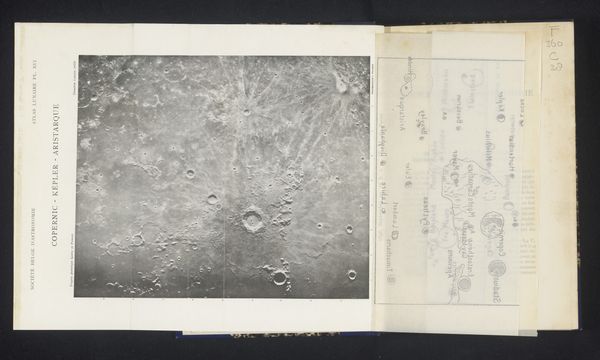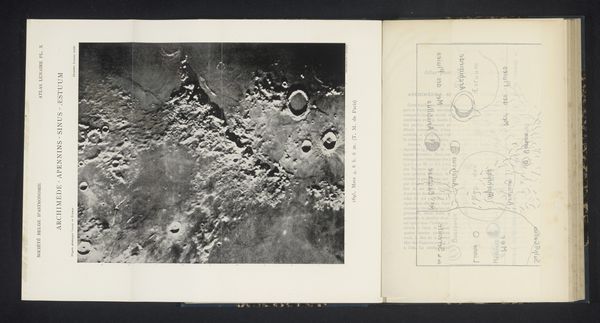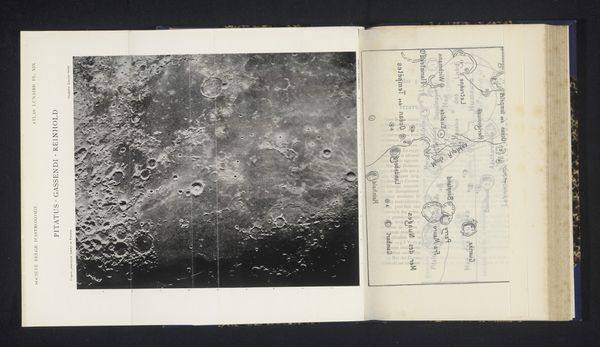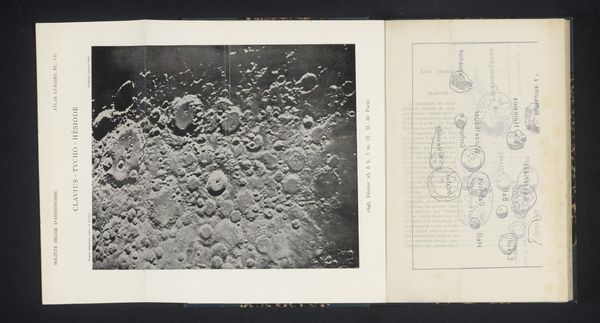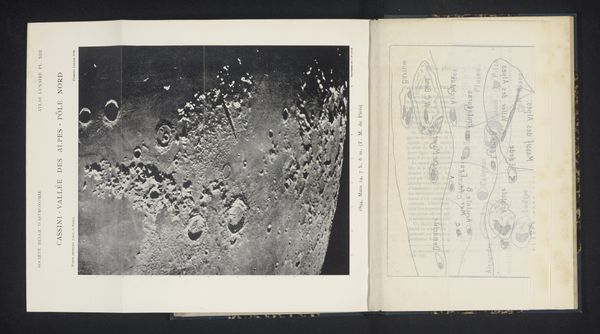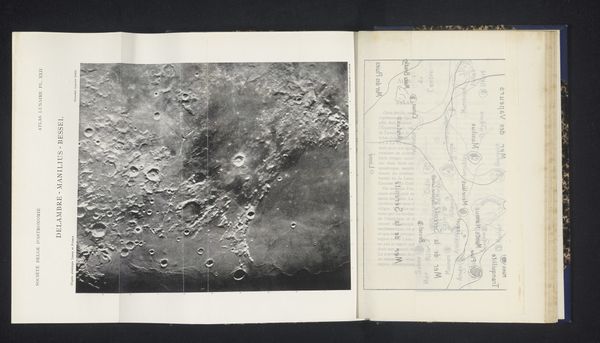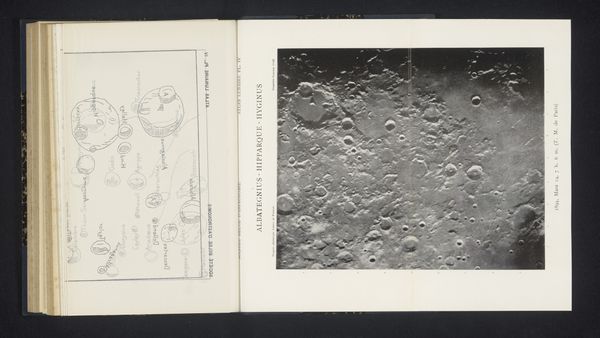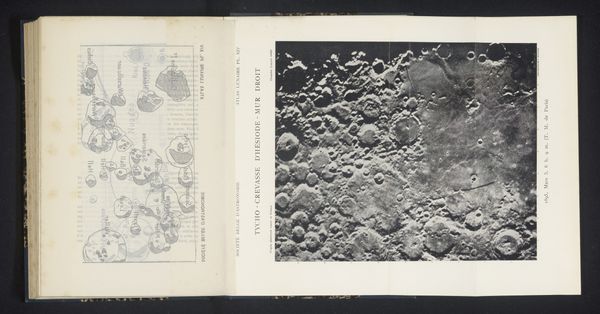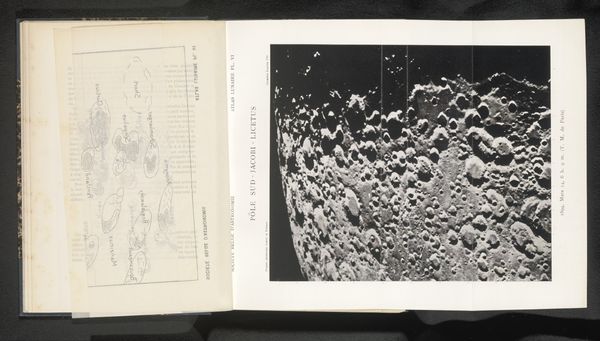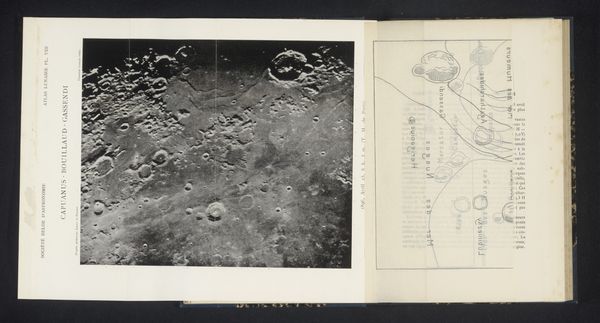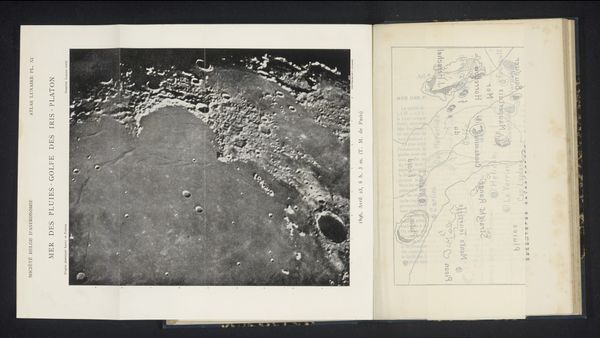
print, photography
#
type repetition
#
aged paper
#
script typography
# print
#
neo-impressionism
#
hand drawn type
#
landscape
#
photography
#
hand-drawn typeface
#
fading type
#
geometric
#
stylized text
#
thick font
#
white font
#
history-painting
#
academic-art
#
realism
#
historical font
Dimensions: height 229 mm, width 188 mm
Copyright: Rijks Museum: Open Domain
This image, captured by Loewy and Puiseux, reveals the moon’s surface pocked with craters—circular forms evoking eyes staring back at us across the void. Since antiquity, circular shapes have possessed profound symbolic weight, representing wholeness, the eternal, and cosmic unity. We see echoes of this in mandalas, the rose windows of Gothic cathedrals, and even the halo in religious iconography. Here, the lunar craters arranged across the celestial body remind me of similar patterns in earthly representations. The moon, often a symbol of the feminine, intuition, and the subconscious, is here subjected to scientific scrutiny, mapped and cataloged like a newly charted territory. This act of observation, too, carries its own symbolism. The gaze, the act of looking, has always been laden with psychological weight—a desire to understand, to control, to possess. In psychoanalytic terms, it represents a primal curiosity, a drive to penetrate the unknown. The act of gazing at the moon, and mapping its features, reflects humanity’s relentless drive to impose order onto the cosmos. This tension between the rational and the mystical, the scientific and the symbolic, will continue to echo across time.
Comments
No comments
Be the first to comment and join the conversation on the ultimate creative platform.
